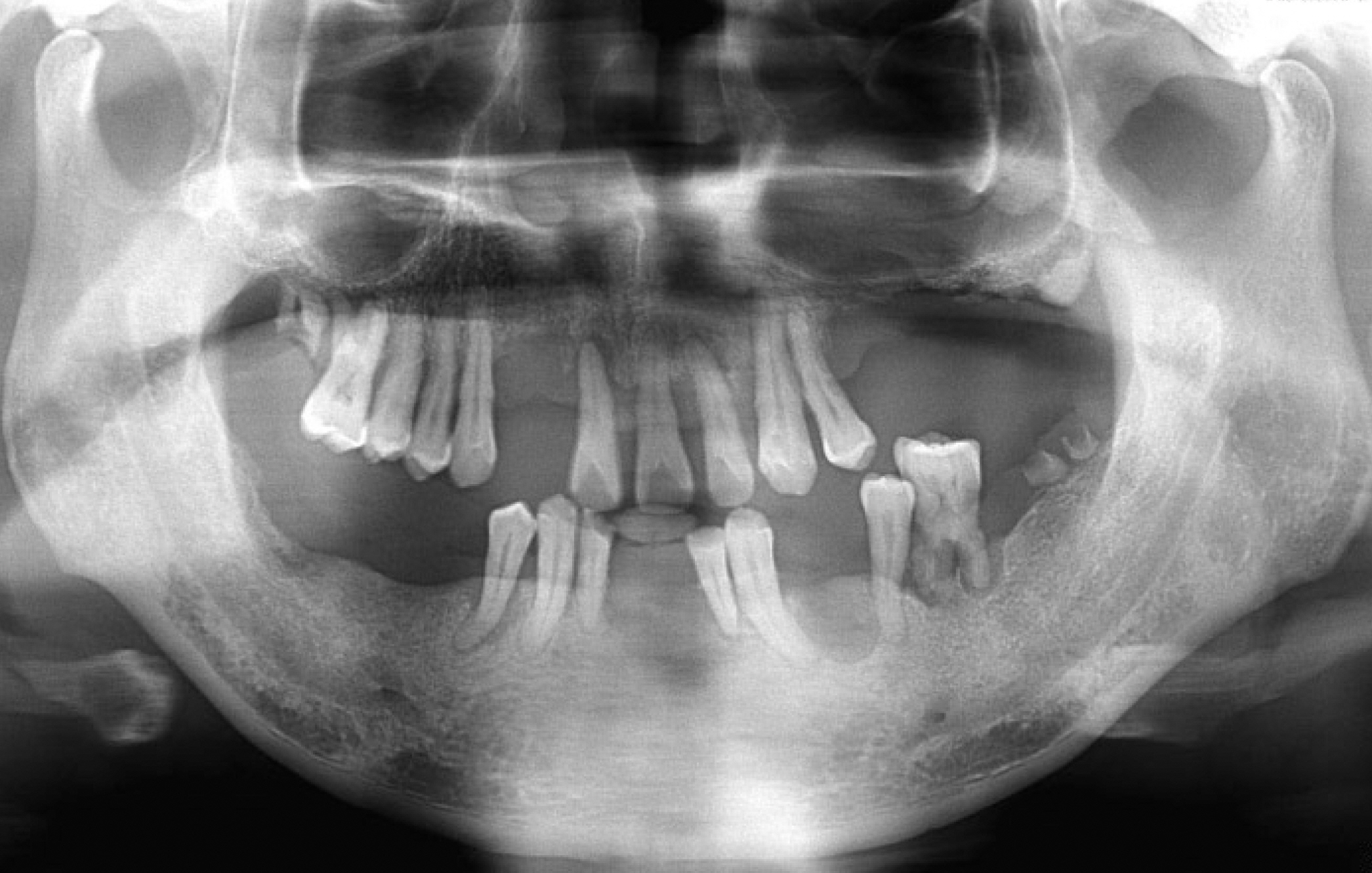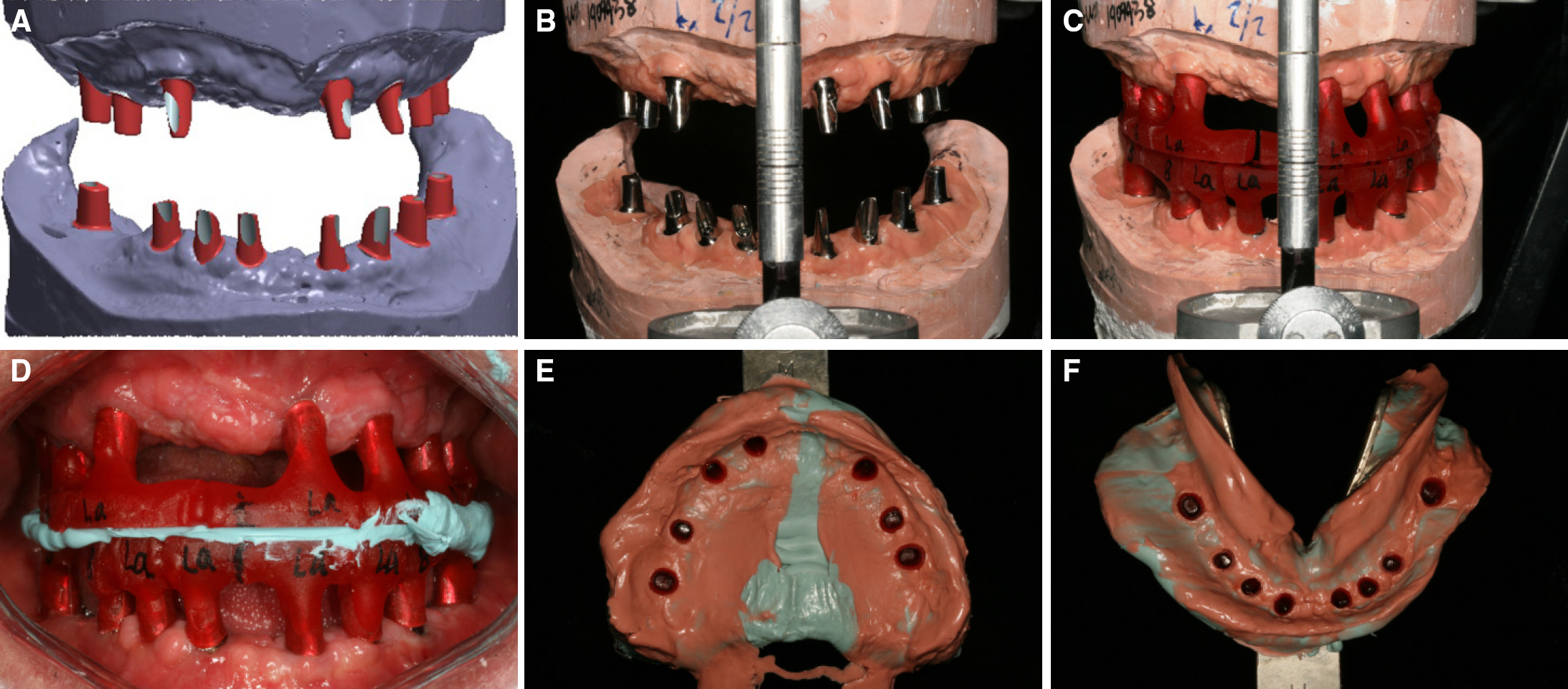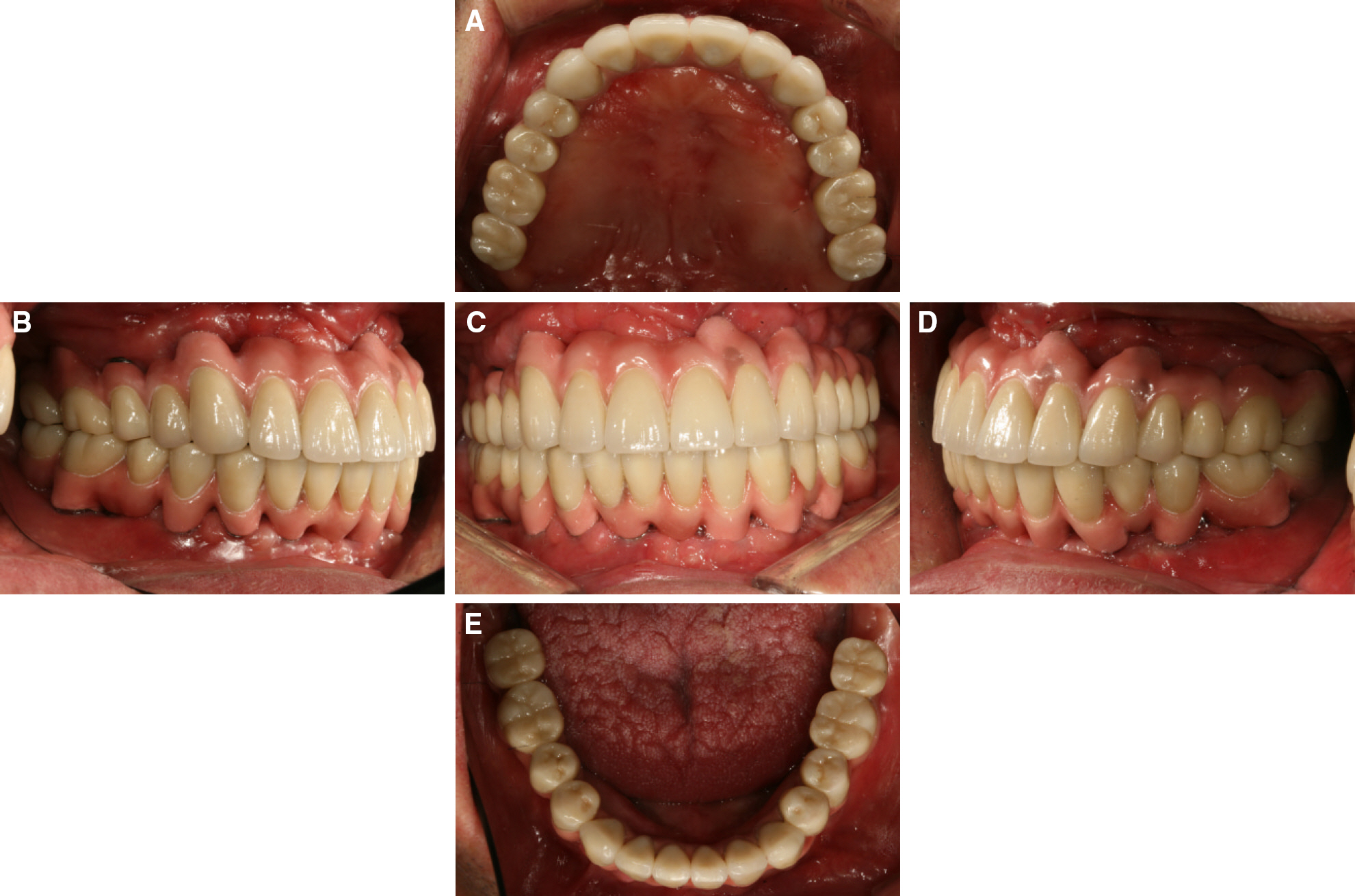J Korean Acad Prosthodont.
2015 Jul;53(3):228-233. 10.4047/jkap.2015.53.3.228.
Full mouth rehabilitation of fully edentulous patient using implant hybrid prosthesis
- Affiliations
-
- 1Major in Dentistry, Department of Medical Science, Hanyang University, Seoul, Republic of Korea. leeys@hanyang.ac.kr
- KMID: 2195253
- DOI: http://doi.org/10.4047/jkap.2015.53.3.228
Abstract
- Loss of teeth may not only imply impaired oral function and loss of alveolar bone but is also often accompanied by reduced self-confidence. This results in a larger problem with the fully edentulous patient. The patient introduced in this study showed multiple missing teeth and mobility of remaining teeth and wanted to have fixed dental prosthesis using implants. Remaining teeth were extracted because of periodontally bad prognosis. This article reports a satisfactory clinical and esthetic outcome of full mouth rehabilitation using implant hybrid prosthesis in fully edentulous patient.
Figure
Reference
-
1. Adell R, Lekholm U, Rockler B, Brå nemark PI. A 15-year study of osseointegrated implants in the treatment of the edentulous jaw. Int J Oral Surg. 1981; 10:387–416.
Article2. Misch CE. Dental implant prosthetics. 1st ed.Mosby;2004. p. 43–52.3. Waskewicz GA, Ostrowski JS, Parks VJ. Photoelastic analysis of stress distribution transmitted from a fixed prosthesis at-tached to osseointegrated implants. Int J Oral Maxillofac Implants. 1994; 9:405–11.4. Assuncao WG, Filho HG, Zaniquelli O. Evaluation of transfer impressions for osseointegrated implants at various angulations. Implant Dent. 2004; 13:358–66.
Article5. Assif D, Nissan J, Varsano I, Singer A. Accuracy of implant impression splinted techniques: effect of splinting material. Int J Oral Maxillofac Implants. 1999; 14:885–8.6. Daoudi MF, Setchell DJ, Searson LJ. A laboratory investigation of the accuracy of the repositioning impression coping technique at the implant level for single-tooth implants. Eur J Prosthodont Restor Dent. 2003; 11:23–8.7. Vigolo P, Majzoub Z, Cordioli G. Evaluation of the accuracy of three techniques used for multiple implant abutment impressions. J Prosthet Dent. 2003; 89:186–92.
Article8. Kokubo Y, Ohkubo C. Occlusion recording device for dental implant-supported restoration. J Prosthet Dent. 2006; 95:262–3.9. Hobo S, Ichida E, Garcia LT. Osseointegration and Occlusal Rehabilitation. Chicago; III: Quintessence;1989. p. 159–62. p. 171–3.10. Loos LG. A fixed prosthodontic technique for mandibular osseointegrated titanium implants. J Prosthet Dent. 1986; 55:232–42.
Article11. Orenstein JH, Appleby DC, Blitzer RM, Cohen SR. Two-piece occlusion rim for screw-retained implant prosthesis. J Prosthodont. 1998; 7:200–2.
Article12. Akova T, Ucar Y, Tukay A, Balkaya MC, Brantley WA. Comparison of the bond strength of laser-sintered and cast base metal dental alloys to porcelain. Dent Mater. 2008; 24:1400–4.
Article
- Full Text Links
- Actions
-
Cited
- CITED
-
- Close
- Share
- Similar articles
-
- Full mouth rehabilitation of mandibular edentulous patient using implant hybrid prosthesis
- Full mouth rehabilitation of fully edentulous patient with implant-supported fixed prosthesis preceding bone graft: A case report
- Full mouth rehabilitation of edentulous patient with fixed implant prosthesis
- Full mouth rehabilitation of mandibular edentulous patient using implant hybrid prosthesis
- Full mouth implant-supported fixed prosthesis restoration of an edentulous maxillary patient using computer-guided implant surgery







